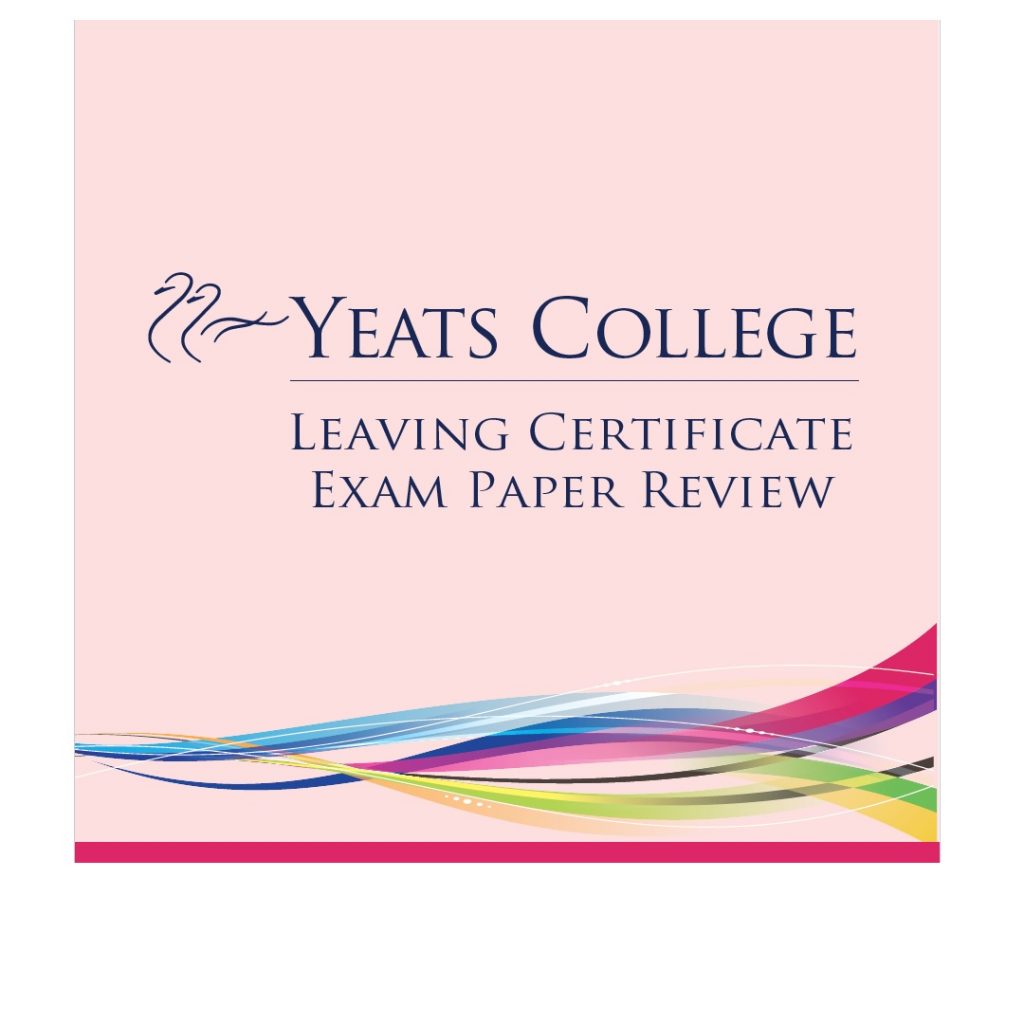Leaving Certificate Spanish Review 2021 – Dr Eoin Barrett
The 2021 Leaving Certificate Spanish Higher Level paper did not throw up any major surprises compared with previous years in terms of the style of the comprehension topics examined, and the overall level of difficulty of the questions. The extra elements of choice included in this year’s paper should have provided most students with an additional level of comfort and more time in which to complete some of the trickier tasks.
In Section A, the new Prescribed Literature text, Gabriel García Márquez’s Relato de un náufrago, was examined for the first time. Though most of the action of the novel chronicles Luis Alejandro Velasco’s attempts to survive a shipwreck, the passage chosen occurs early in the text, and details his navy vessel’s departure from the port of Mobile, Alabama. Though the passage included some quite specific terms related to shipping and navigation, the exam questions focused on more general vocabulary, including physical description and household appliances.
The first long comprehension or ‘Journalistic Text’ discussed the importance of Physical Education in Spanish schools, and the lack of time devoted to the subject compared to other European countries. The text was quite accessible, in the sense that it combined two broader topic areas, Sport and Education, that should have been familiar to well-prepared students.
Question 1 (a-e) was clear and quite straightforward, given that the key words in the questions provided good guidance to candidates in terms of identifying the passages that contained the relevant answers, though for part (e) they may have been unsure exactly which details from the paragraph were relevant to the answer.
When answering Question. 2 (a), there seemed to be two options for the equivalent word(s) to “ocio” (leisure): either “tiempo libre” or “descanso”, though parts (b) and (c) were manageable.
In Question 3, it was important that students provided the English equivalent to the phrases indicated by referring back to the article for context, though the passages chosen did not contain any nasty surprises.
Question 4 offered two short and relatively simple options to paraphrase in Spanish: ‘tiene poca importancia’ and ‘las estadísticas indican’, which should not have posed difficulties for well-prepared students familiar with previous years’ papers.
The Section A short comprehension questions were manageable, and this year students could choose which of the two to attempt rather than having to complete both. The first related to the status of the bee as “the most important living being on the planet”, and contained vocabulary that should have been familiar, or could be worked out from the context. The second text had an Irish flavour, detailing the development of mountain bike tracks in the Slieve Bloom mountains in Laois and Offaly. Again, in this section the key words from the questions should have provided students with good guidance when identifying the passages that contained the answers.
The second long comprehension task, Section B, related to volunteer work generally, and more specifically the experience of Javi Losada, an engineering student from the University of Zaragoza who opted to become a volunteer in the Chilean part of Patagonia. This text favoured students who had assimilated vocabulary across a broad range of topic areas.
Questions 1 and 3, which require students to find words or phrases in the text equivalent to those provided in the question, were manageable, though as always students had to ensure they only included the exact equivalent word or phrase to gain the marks. In Question 1 (c) it may have been tricky to spot that “dijo adiós” was equivalent to “se despidió (de)” and in Question 3, (d) “elegir” and (e) “sucede” may have posed difficulties.
The phrases to be translated in Q.2 were uncomplicated, and students should have done well in Q. 4 as long as they provided plenty of detail in their answers.
The Opinion Piece titles related to volunteer work and were easy to understand, though they were quite similar to each other. These essay titles underlined the need for students to develop their writing skills so that they can brainstorm and develop arguments in exam conditions, rather than attempting to have a few essays memorised in the hope of fitting one of them to the title.
In Section C, students this year only needed to answer one of the tasks from a choice of four, and within each task there were additional elements of choice also.
The Dialogue Construction involved a conversation with an employee of a hostel in San Sebastián, and did not require any unusual vocabulary or grammatical structures. While this task usually involves the use of at least one Subjunctive, there were none required this year.
The Letter/Email option related to mobile phone addiction among young people. This task was approachable and contained significant elements of choice, though overall I feel it was still the most difficult of the four available options this year.
The Diary Entry invited the candidate to imagine they were doing a Spanish language course in Valencia, allowing students to incorporate material that would have been prepared for the Speaking exam. It should not have posed difficulties for students who had had plenty of practice with previous years’ tasks.
The Note option asked students to imagine they were going to a concert in Valencia. While there wasn’t too much specific vocabulary required, this year each of the five turns referred to future events and required future tenses, which was quite unusual.
The Listening test was quite varied in terms of the topics examined, but I felt it was quite accessible for students who had a broad range of vocabulary and who got plenty of practice with past and mock papers. It featured sections on Canfranc train station, the Spanish golfer Jon Rahm, the Casa de papel (Money Heist) actress Alba Flores, the Route of Quijote, plants as an alternative to household pets, as well as a section on the department store El Corte Inglés. The weather question did not throw up any major difficulties or unusual questions.
All in all, students should have been happy with the 2021 Spanish Higher Level exam, especially taking into account the additional elements of choice provided this year.





